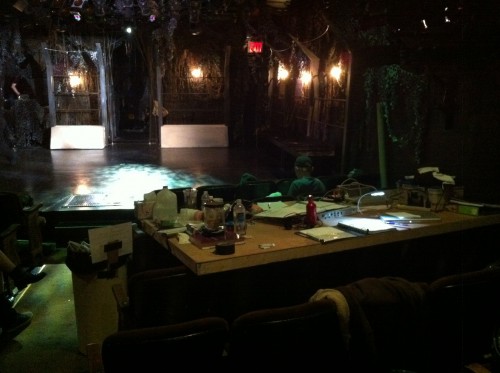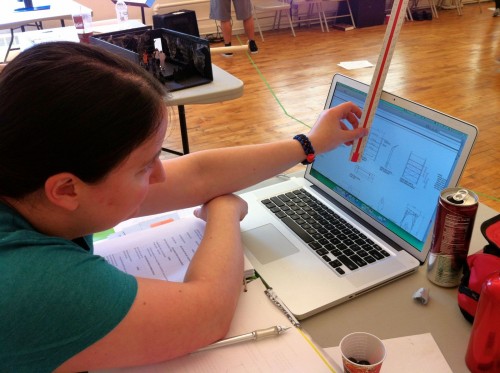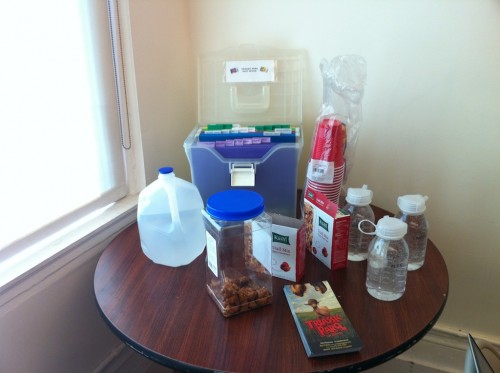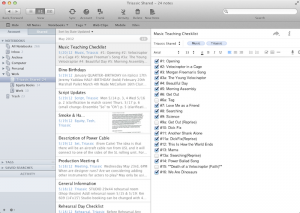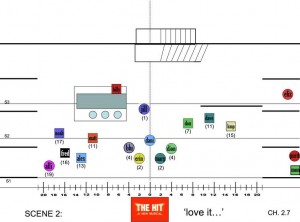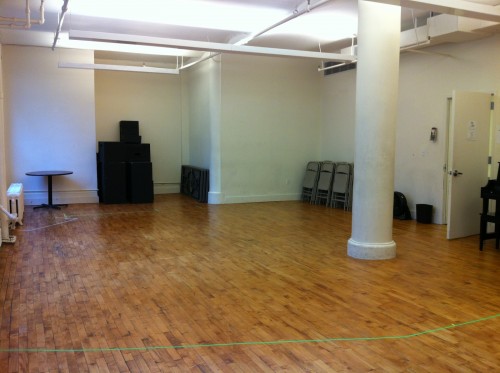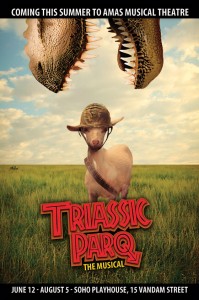I want to talk about keeping communication going on a show, with a constantly changing performance and rehearsal situation, in the midst of a weather disaster where the people involved in the show may lose power, internet, cell service, or all three.
As Hurricane Sandy approached, we waited to hear what would happen to our performances on Sunday, before the storm hit. My experience in the past has been that when there have been potential cancellations of shows, Broadway collectively decides what to do (through the Broadway League), and most other shows just follow along. This is what our producers were doing as well. The biggest component of the decision is usually transportation issues. When the audience can’t get in, there are always some tourists trapped in Times Square with nothing to do, but if the people who work on the show can’t get to the theatre from wherever they live in the outer boroughs or surrounding communities, the show can’t go on. On Saturday the MTA announced that it might shut down at 7PM on Sunday, and we knew that if that happened, we couldn’t have a Sunday night show because there would be no way to get home.
Sunday morning I got a text from an actor, which was my first indication that the MTA had indeed decided to shut down. At that point it was just a matter of time to wait for official word from my GM, and a decision on whether we would go ahead with the matinee.
Soon it was decided that we would do the matinee, but the evening show was obviously cancelled. I used my favorite notification method of the modern world, sending an email to 56 people involved in the show (many of whom probably really didn’t care if we had a show, but you never know who might need that information), along with a request for the cast, crew and orchestra to reply to let me know they got the message. When that was sent, I drew up a small list on a post-it, numbering 1 through 12 on one side, and then separate spots for crew and orchestra. In the 12 spaces I wrote the names of my actors, and then filled in the names of the crew and orchestra, making sure to take subs into account. Then I waited for the emails to roll in, and crossed off the names as they checked in. After an hour I texted the three people who I hadn’t heard from, and got replies from them fairly quickly, satisfied that everyone needed for the operation of the show knew what was going on.
We did the matinee and then went our separate ways to wait out the storm, and see what the fate of our Tuesday night show would be (as an aside, we upgraded to an 8-show-a-week schedule this past week — or attempted to — leading to a lot of jokes that this is a sign from God that we shouldn’t do 8 shows).
Most people were keeping in touch on Facebook, and as the night, and the next day went on, some people lost power and managed to post about it, or text me, and every time I heard something that indicated a person might not have full access to the internet, I added their name to a list and made note of the circumstances. By the end of the day on Monday I had a complete picture of who had power, internet and cell service. I referenced this list every time I had new news to share, to make sure I texted the people who needed to be texted, and noticed the ones who didn’t respond, to keep tabs on the fact that they might not have gotten the message.
When we got news of the cancellation of the Tuesday performance, I even posted it on Facebook, just in case there were some people who had no access to their email or cell phones, but somehow were able to get on Facebook. I was able to cross off some names on my notification list based on their “likes” rather than responses to my emails or texts.
In addition to the questions about whether the show was going on, we had a lot of other issues hanging in the air. Even without the storm, this was a rough week for us, with numerous actors out, a put-in that not everyone was available for, and even a day where we were going to have to do the show with one track cut. As much as Sandy screwed up our plans, she also inadvertently fixed some of our problems: we had the luxury of being able to postpone the put-in rather than do it with many elements missing, and one of our actors who was supposed to be leaving town had his flight canceled, so he ended up in the show, giving us enough actors to cover the show properly. A lot of emails were flying around trying to work out all these things, and waiting for pieces of the puzzle to fall into place, but in the end it worked out quite well.
Thankfully no one on the production was completely without a way to get in touch with the outside world, and the worst case I had to deal with was an actor who had to leave his house and go down the block to get cell service, and thus would get my texts and emails, but only when he went out to seek them. We were especially lucky that no one’s home was significantly damaged.
Aside from the lights flickering ominously for several hours, and the wifi seeming to freeze once in a while, I never lost power or internet. Having to move out of Chelsea is the great heartbreak of my life, but there are some advantages to living on a mountain, miles from midtown. The disadvantage came on Wednesday, however, when the subways weren’t running, it’s been about 130 years since the streets of New York could handle road traffic without them. Buses were “running,” but it seemed to be a universal truth all over the city that the only way to actually get anywhere was to walk.
There are a bunch of us who live in Washington Heights, and my ASM Cassie and I decided to walk, as we didn’t want to risk being late, and at least we’d be sure to arrive at the time we intended. I walked about 30 blocks to her place, and then we walked another 120 blocks to the theatre (a total of 7.7 miles for me). It was actually a nice walk, and I got to see some parts of the city that I don’t usually pass on foot. We took some photos along the way, which are on display on Silence!’s Facebook page (I hope that link works). It took us a little over two hours, and we were pretty exhausted by the time we had to work, so the show is kind of a blur, but we did it. On the way home, the six of us going to Washington Heights piled into one person’s car, and with the traffic largely gone, we got home in a civilized manner.
I’m glad the shows are up and running, but the commute is still very rough for everyone coming from Brooklyn and Queens, so I’m hoping they get service back soon. I hope all you readers in the area got through the storm without too much trouble!



